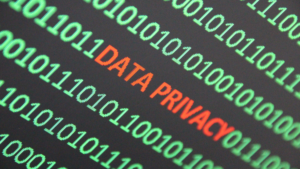IT Asset Audit
Introduction
For any corporate entity that maintains some IT infrastructure, it’s essential that the various hardware and software components perform to the best of their capacity and boost the organization’s profitability and process efficiency while reducing risk and liability. An IT asset management audit program can assist in achieving this.
To ensure that your organization can keep track of these infrastructure contributions, you need a comprehensive IT asset audit process to understand all your IT assets, including hardware and software used throughout the enterprise.
An IT asset audit can be a key contributor to this understanding.
What is an IT Asset Audit?

An IT asset audit is a component of the larger field of IT Asset Management (ITAM) which, according to the Gartner Information Technology Glossary, 2021, “provides an accurate account of technology asset lifecycle costs and risks to maximize the business value of technology strategy, architecture, funding, contractual, and sourcing decisions.”
Within this framework, an IT asset audit involves analyzing all the technological components in your infrastructure setup for adequacy and effectiveness. The audit scrutinizes each technology to establish that it serves a specific need and efficiently meets these demands. The results of this analysis enable organizations to identify opportunities to reduce costs and improve overall efficiency.
A product audit report example might include a detailed description of the individual IT products and the elements outlining the scope, objectives, timing, and resources allocated to the auditing process.

Make an Informed Decision
Types of IT Asset Audit
The WEEE waste disposal process can be broken down into three steps.
Internal Audits
During an internal IT asset audit, the organization conducts its own analysis of its systems. Essentially, internal audits help organizations manage control of their IT assets and the accounting process associated with them. For smaller-scale enterprises, the role of internal auditor typically falls to a senior-level IT manager within the organization. This person may be responsible for building audit reports for C-suite executives and external security compliance officers.


External Audits
In external auditing, the organization engages the services of a third party to analyze its systems and infrastructure. For the organization, an external audit is critical in evaluating and validating IT assets. The nature of the external auditor may vary, depending on the nature of the enterprise and the purpose of the audit being conducted. Some may hail from third-party auditing services specializing in technology auditing. Others may be appointed by industry standards authorities or federal or state government offices, particularly in audits for security and compliance.
Manual Audits
Both internal or external auditors can perform manual audits. In addition to physical infrastructure, the auditing process may involve interviews with an organization’s human employees, especially in security and compliance audits.


Automated Audits
Automated audits are typically conducted through software, in what’s known as a Computer-Assisted Audit Technique, or CAAT. These automated systems can produce detailed and customizable audit reports suitable for internal executives and external auditors.

See how much your IT equipment is worth
IT Asset Auditing Process
In terms of the IT asset audit process, a standard workflow for IT asset auditing should cover the following stages:
- Use multiple discovery sources to build your asset inventory.
- Track the complete life cycle of your IT assets.
- Set up a single management point for software and licenses.
- Conduct IT asset management audit in accordance with your defined schedule.
- Quantify the total value of unused hardware and software applications.
- Identify stolen or missing hardware and software applications.
- Use the results of IT asset audit analysis to optimize asset usage and cut down on maintenance costs.
- Plan for the future by assessing the adverse impact of aging hardware and software to avoid losses and map out new asset purchases and the disposition or repair of aging equipment.
Entertainment equipment
These include radios, TVs, Speakers, TV remotes, headsets, earphones. Since these devices do not store data, they are refurbished and resold. These items are also recycled and parts reused to manufacture more equipment. If they are no longer functional, the equipment is shredded and incinerated.
Large and small household appliances
Appliances in this category include washing machines, freezers, refrigerators, dishwashers, hairdryers, coffee machines, toasters, irons. The discarded waste is collected and transported to a recycling plant. Here, the waste is sorted to recover usable parts for manufacturing end products. The remaining waste is taken through shredding mills. The shredded and recycled parts are repurposed into plastics and metal that can be reused.
Medical equipment
Medical equipment is recycled differently due to its sensitivity. Only verified re-processors are allowed to dispose of medical equipment to prevent cross-contamination. For single-use items, they undergo cleaning, sterilization, and inspection. Reprocessing medical equipment helps hospitals reduce waste and cut the costs of repurchasing new items.
Lighting equipment
These include LED bulbs, fluorescent bulbs, and lighting cables. Lighting fixtures contain materials such as copper, glass, aluminum, recyclable plastics. These items are collected and sorted in a recycling facility.
Benefits of IT Asset Auditing
At the business productivity and efficiency level, performing regular audits of IT assets helps your organization manage and control IT infrastructure. The IT asset audit process helps evaluate and validate hardware and software to contribute to business value and the accounting process.
An IT asset audit can also protect your infrastructure assets from unauthorized access, theft, and quality control issues. According to Gartner Inc., about 5% of assets are stolen annually. IT asset auditing can help in identifying stolen hardware and software applications, enabling organizations to minimize losses due to theft and replace the stolen components as soon as possible.
Besides identifying stolen components, an IT asset management audit enables you to:
- Account for old, unused, obsolete, and missing equipment from your organization’s inventory.
- Keep an accurate record of your IT assets.
- Manage the depreciation of your organization’s IT equipment.
- Meet your regulatory compliance obligations.
IT Asset Audit checklist
Making an inventory of current resources is the first step in an IT asset management audit checklist.
This might typically include:
- Desktop computers
- Laptops
- Mobile phones
- Photocopiers
- Printers
- Fax machines
- Cathode Ray Tube (CRT)
- Monitors
- Flat-screen (TFT) Monitors
- Terminals
- File Servers
- Hard Drives
- Data tapes
- Networking equipment
- Networking equipment
- Uninterruptible Power
- Supply (UPS) units
- Audio-visual equipment
- Testing equipment
- Electrical appliances
- Associated peripherals
A simple template for an IT asset audit checklist would take the general form below:
Scope of the audit
This should be defined clearly, to limit the required extent of analysis. For example, the organization might limit the audit to user authentication or network access controls.
Objective of the audit
This should cover both the security evaluation objective and a broader outline of the kind of information that the audit will examine.
Schedule for the audit
Typically, the plan should schedule audits for the next three to five years, with specific timing based on prevailing security threats and business needs.
Audit Frequency
Taking the degree of risk and sensitivity of each IT asset into account, standard practice is to conduct an audit once every three years for IT systems containing sensitive data.
Resources required for the audit
Specifications should include the nature of the auditor (internal or external, etc.), any relevant contractual terms, and provisions for collecting and storing audit logs.
Any Additional Requirements
These should be specified in relation to each scheduled audit.
IT Asset Management Audit
IT Asset Lifecycle Management or ITALM is a core function of the more general field of IT Asset Management or ITAM. The principal aim of ITALM is to assist organizations in boosting their productivity through the making of informed decisions on IT needs and services, based on careful monitoring of the organization’s various IT various resources and their lifecycle stages.
An IT asset management audit program involves planning an IT asset audit, studying and evaluating the organization’s IT controls, testing those controls, and reporting any problems.
An IT asset management audit typically requires a lot of time, effort, and complexity. For an internal auditor hailing from your organization, the process may also require additional research and training before the process can even begin.
When drawing up an IT asset management audit checklist, it may be necessary to take into account several IT security standards that mandate auditing as part of their framework. Some apply to IT in business as a whole, while others are sector or industry-specific.

The International Organization for Standardization (ISO) publishes various guidelines for IT audit security compliance, such as the ISO/IEC 27000 series, which focuses on keeping information assets secure.
The Security Rule of the Health Insurance Portability and Accountability Act (HIPAA) gives specific guidelines on how organizations should protect electronic personal health information (ePHI).
The Personal Information Protection and Electronic Documents Act (PIPEDA) is a Canadian law relating to data privacy. It governs how private sector organizations collect, use and disclose personal information in the course of commercial business.
The PCI DSS standard applies directly to companies dealing with any sort of customer payment and sets out conditions for compliance in the handling of credit card data and transactions.
The Benefit of Hiring an External Auditor
Hiring a professional external auditor can save your organization time that could be more profitably spent and minimize potentially costly errors — particularly if the service offers automated auditing. A professional auditor can help your organization understand depreciation rates and help in finding ways to make the most of your IT assets.
A certified external auditor will also have access to the latest auditing techniques and technology and should understand the relevant regulations and guidelines that your organization must observe for regulatory compliance.
A leader in the IT Asset Disposition (ITAD) industry, TechReset offers on-site device removal, certified audit reporting, and completely secure data eradication through gold standard data cleanse software or physical hard drive shredding.

See how we can solve your e-waste recycling needs
Related Posts

What are the Differences between ITAD and Recycling?
In today’s digital climate, Information Technology Asset Disposition (ITAD) companies are an extremely useful resource when it comes to handling the safe and reliable disposal

Privacy Legislation In Canada – A Guide To Upcoming Significant Changes
Private Sector Privacy Laws and policies have been in turmoil for a while in Canada. With the introduction of the GDPR (General Data Protection Regulation)

3 Promising Ways To Dispose E-Waste For Any Business
Electronic waste or e-waste is a general term for electronic devices that need to be disposed of. Though it certainly applies to the regular Smartphone